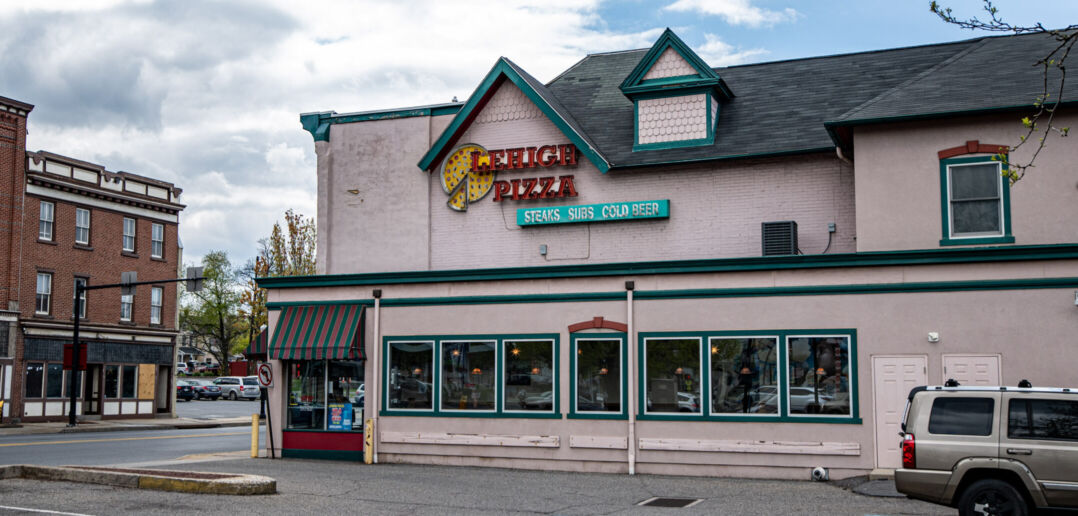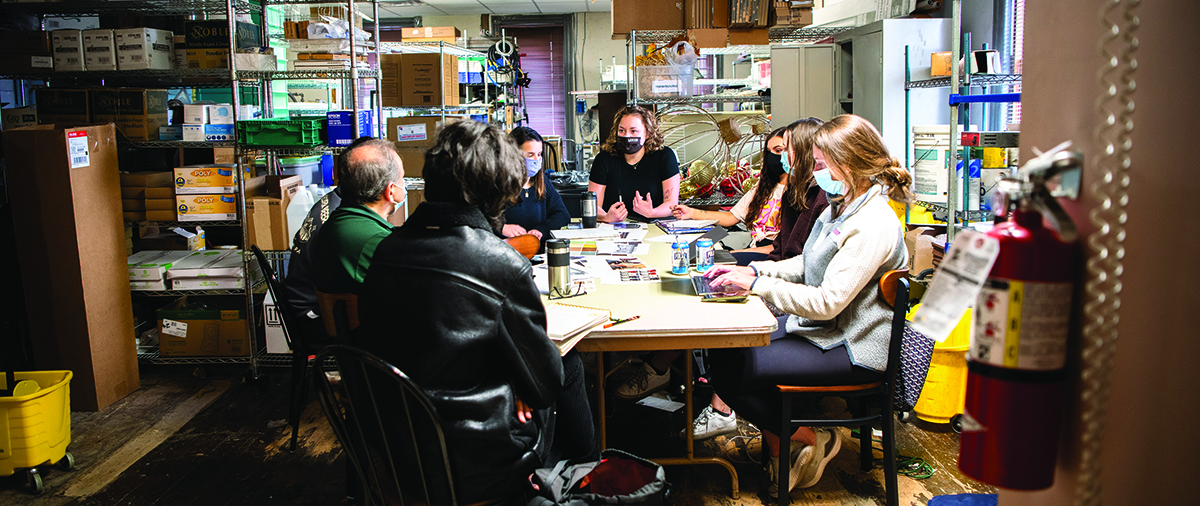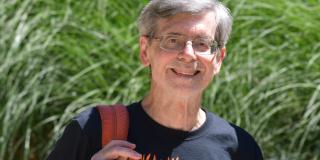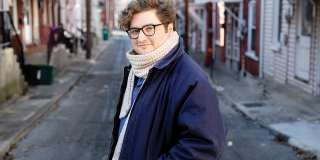
Student team helps Lehigh Pizza create a new look while honoring its history
When the owner of an iconic southside Bethlehem pizza shop decided to remodel, he asked his summer cashier, Janelle Laros ’21, a Lehigh architecture major, for help.
Two semesters later, an interdisciplinary team of business, architecture and design students have had an invaluable hands-on experience that a traditional classroom could not have provided. And Lehigh Pizza, which has served the community for decades, is on its way to a new look that promises to retain its historic charm.
Laros, together with art, architecture and design student Ella Fabozzi ’22 and an “A-team” of students, delved into materials, color palettes, lighting, space configurations, the City of Bethlehem zoning code and more. The project continued through fall 2021.
“Over the summer, the project has matured to engage in real-world practice—ordinances, certification, bidding and work with contractors—and so have the students matured,” says Nik Nikolov, associate professor of architecture and a practicing registered architect. “In addition to providing a solid process and product that has engaged students, clients and the community, one of the most rewarding experiences for me has been watching my team grow through their work together and mature in their understanding of themselves as designers and citizens. What we do is largely about the production of knowledge but also, in no small part, about personal growth.”
Laros, from the Hawaiian town of Kona, began in Lehigh’s Mechanical Engineering program and switched her major to the Integrated Degree in Engineering, Arts and Sciences (IDEAS) before finding architecture.
She worked part time at the pizza shop last fall, and the extra semester provided a fresh perspective, she says, allowing more thought on “how people feel supported in their space.”
Lehigh Pizza will soon have fresh paint, new seating, a new awning and a new logo designed by Fusion, Lehigh’s student design agency. The interior space will be opened up from its current crowded configuration, which means removing a wall and moving the counter back. The team made sure it will retain its classic pizza shop atmosphere.

The eatery, first located at the corner of Fourth Street and Broadway, has been a reliable favorite of the southside and college community since 1976. It has been in the same family at its current location, the corner of Third and New streets, since October 1996, surviving the closure of Bethlehem Steel and the recent pandemic. The two-story building, decked in ornamentation on its facade, was last expanded in 2003.
Fabozzi, who is from Concord, N.H., and who also started in engineering, appreciates that as the project continued, the team was “making more decisions, meeting with managers more and being more decisive about what we are implementing. A lot of (the first) semester was brainstorming and looking at the big picture,” she says.
She likens the project to an internship.
“There is a client, and we meet their needs,” she says.
It’s the kind of collaborative work experiences she would like to find.
Two new students joined the team this past fall, each of whom brought different skills. Alex Torres ’21, of Wayland, Mass., an Integrated Business and Engineering finance and civil engineering major, is making sure Lehigh Pizza owner George Lioudis can implement the changes. Torres consulted with a professional engineer about the load-bearing walls and about the safety aspects of the early-1800s structure with two add-ons.
“The goal is to present the package to George and have him ready to go with a contractor,” says Torres.
In November 2021, Bethlehem Historic Conservation Commission approved the changes to the exterior and it awaited approval from city council.
Integrated Degree in Engineering Arts and Sciences (IDEAS) student Nicholas Chiu was mindful that the design reflect the owner’s vision and invite the community, such as having signs in English and Spanish. Chiu’s interest in theatrical set design influenced his focus on what message the space conveys.
“I was first intrigued with the real-world applications of the project,” he says.
The team members were committed to reflecting the history of the Queen Anne-style building. They dismissed, for example, a steel awning.
“We had to take a step back to work within the style, not slap on something,” Fabozzi says.
They considered the business model. Should patrons linger or should tables turn over quickly?
“We need to understand the movement in space, the customer flow. We looked at what does it look like being an employee. What areas have the most sales, how to design for a more efficient flow,” says Fabozzi.
Torres adds that the experience closely resembles what he saw during a design consultancy internship.
“Working in class was okay but my favorite part was making an impact, talking to the people actually using the design,” he says. “It’s more impactful to the customers, business and the community as a whole.”
The best design, explains Nikolov, “is borne out of the diversity of the team members, of their collaboration among themselves and with the owners and out of an intimate engagement with the site and the community around it. It’s a learning experience whichever way you look at it. It’s all about growth for everyone involved, while leaving a positive mark on our town.”
Photos courtesy of Brown & White/Jessica Mellon, Christine Kreschollek






